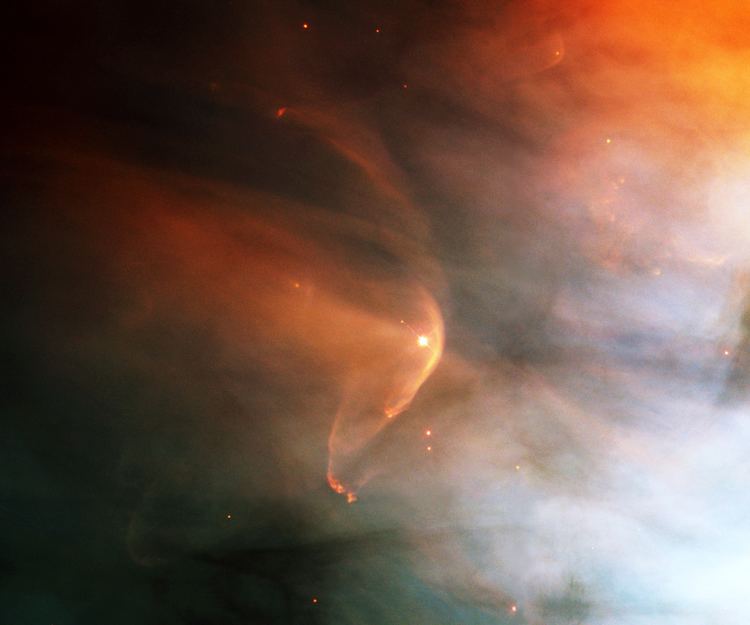 | ||
Bow shocks form the boundary between a magnetosphere and an ambient magnetized medium. This occurs when the magnetic field of an astrophysical object interacts with the nearby flowing ambient plasma. For example, when the solar wind, flowing with a relative speed of order 400 km/s, encounters the magnetic field of Earth, a bow shape boundary forms. For Earth and other magnetized planets, it is the boundary at which the speed of the stellar wind abruptly drops as a result of its approach to the magnetopause. For stars, this boundary is typically the edge of the astrosphere, where the stellar wind meets the interstellar medium.
Contents
Description
The defining criterion of a shock wave is that the bulk velocity of the plasma drops from "supersonic" to "subsonic", where the speed of sound cs is defined by
A common complication in astrophysics is the presence of a magnetic field. For instance, the charged particles making up the solar wind follow spiral paths along magnetic field lines. The velocity of each particle as it gyrates around a field line can be treated similarly to a thermal velocity in an ordinary gas, and in an ordinary gas, the mean thermal velocity is roughly the speed of sound. At the bow shock, the bulk forward velocity of the wind (which is the component of the velocity parallel to the field lines about which the particles gyrate) drops below the speed at which the particles are gyrating.
Around the Earth
The best-studied example of a bow shock is that occurring where the Sun's wind encounters Earth's magnetopause, although bow shocks occur around all magnetized planets, such as Jupiter or Saturn. Earth's bow shock is about 17 kilometres (11 mi) thick and located about 90,000 kilometres (56,000 mi) from the planet.
Around the Sun
For several decades, the solar wind has been thought to form a bow shock at the edge of the heliosphere, where it collides with the surrounding interstellar medium. Moving away from the Sun, the point where the solar wind flow becomes subsonic is the termination shock, the point where the interstellar medium and solar wind pressures balance is the heliopause, and the point where the flow of the interstellar medium becomes subsonic would be the bow shock. This solar bow shock was thought to lie at a distance around 230 AU from the Sun – more than twice the distance of the termination shock as encountered by the Voyager spacecraft. However, data obtained in 2012 from NASA's Interstellar Boundary Explorer (IBEX) indicates the lack of any solar bow shock. Along with corroborating results from the Voyager spacecraft, these findings have motivated some theoretical refinements; current thinking is that formation of a bow shock is prevented, at least in the galactic region through which the Sun is passing, by a combination of the strength of the local interstellar magnetic-field and of the relative velocity of the heliosphere.
Around other stars
In 2006, a far infrared bow shock was detected near the AGB star R Hydrae.
Bow shocks are also a common feature in Herbig Haro objects, in which a much stronger collimated outflow of gas and dust from the star interacts with the interstellar medium, producing bright bow shocks that are visible at optical wavelengths.
The following images show further evidence of bow shock existence from dense gases and plasma in the Orion Nebula.
Magnetic Draping effect
A similar effect, known as the magnetic draping effect, occurs when a super-Alfvenic plasma flow impacts an unmagnetized object such as what happens when the solar wind reaches the ionosphere of Venus: the flow deflects around the object draping the magnetic field along the wake flow. The condition for the flow to be super-Alfvenic means that the relative velocity between the flow and object,
where
